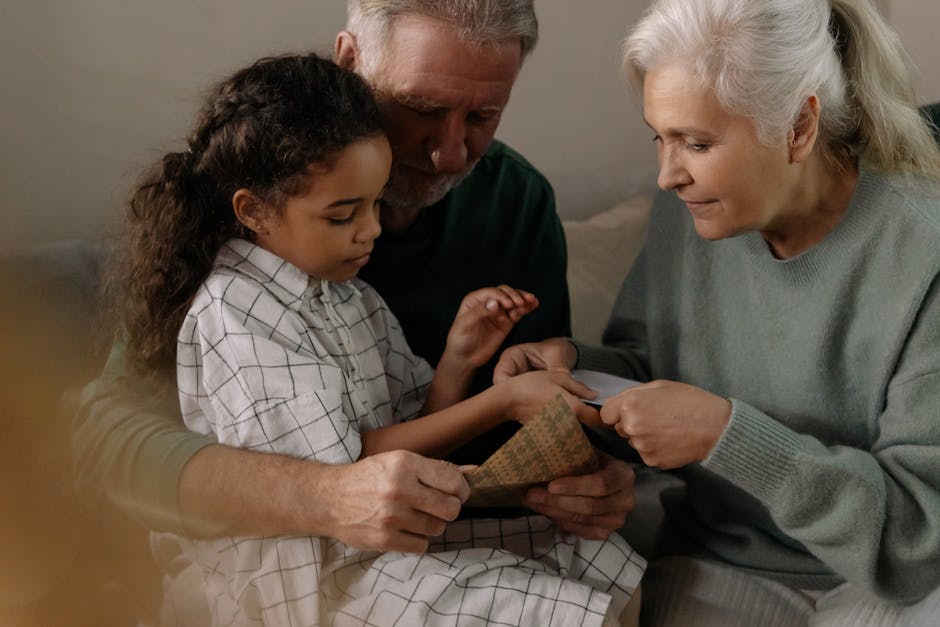Building Empathy Through Storytelling
Storytelling has been an integral part of human communication since the dawn of civilization. From ancient myths and fables passed down through generations to modern-day novels and movies, stories have the power to captivate, inspire, and connect us on a deep emotional level. But beyond mere entertainment, storytelling has the potential to foster empathy the ability to understand and share the feelings of others. In this article, we will explore the profound impact of storytelling on empathy, delving into its mechanisms, applications, and implications in various aspects of our lives.
The Power of Narrative

At the heart of storytelling lies the power of narrative the art of weaving together characters, plots, and emotions into a compelling story that resonates with the audience. When we engage with a story, whether through reading a book, watching a film, or listening to a podcast, our brains are transported into the world of the narrative, experiencing the events and emotions vicariously through the characters. This process, known as narrative transportation, allows us to step into someone else’s shoes and see the world from their perspective.
Studies have shown that when we are immersed in a story, our brains release oxytocin, a hormone that is associated with empathy, bonding, and prosocial behavior. This neurobiological response to storytelling helps us connect with the characters on an emotional level, making us more likely to empathize with their struggles, triumphs, and emotions. In this way, storytelling acts as a vehicle for empathy, allowing us to experience the lives of others in a way that is both enlightening and transformative.
Building Empathy Through Representation

One of the most powerful aspects of storytelling is its ability to represent diverse perspectives and experiences. By telling the stories of marginalized communities, underrepresented voices, and individuals facing adversity, storytelling can shine a light on the human experience in all its complexity and diversity. When we encounter characters who are different from ourselves whether in terms of race, gender, sexuality, or social background we are challenged to empathize with their struggles and see the world through their eyes.
Representation in storytelling is not just about diversity for diversity’s sake; it is about creating a more inclusive and compassionate society where all voices are heard and valued. By amplifying the stories of those who have been silenced or marginalized, storytelling can foster empathy across boundaries of race, class, and culture, helping us bridge the gap between “us” and “them” and recognize our shared humanity.
The Role of Personal Narrative

While representation in storytelling is essential for building empathy on a societal level, personal narrative plays a crucial role in fostering empathy on an individual level. When we share our own stories our joys, sorrows, fears, and triumphs we invite others to empathize with our experiences and connect with us on a deeper level. By opening up about our vulnerabilities and struggles, we create a space for empathy to flourish, allowing others to see us not as “others” but as fellow human beings with shared hopes and fears.
Personal narrative is particularly powerful in building empathy in interpersonal relationships, whether between friends, family members, or romantic partners. By listening to each other’s stories with an open heart and mind, we can deepen our understanding of one another, strengthen our emotional bonds, and cultivate a sense of empathy and compassion that is essential for healthy and fulfilling relationships.
Empathy in Education

Storytelling has long been recognized as a powerful tool for education, helping students learn about history, culture, and the world around them in a way that is engaging and memorable. But beyond its academic value, storytelling can also play a crucial role in teaching empathy and emotional intelligence to young learners. By exposing students to diverse stories and perspectives, educators can help them develop the empathy and compassion that are essential for navigating the complexities of the modern world.
One effective way to incorporate storytelling into education is through the use of narrative-based curricula and activities. By using books, films, and other forms of storytelling as teaching tools, educators can help students develop their empathy skills by encouraging them to step into the shoes of the characters, analyze their motivations and emotions, and reflect on how they would act in similar situations. This process of perspective-taking and emotional engagement can help students develop a deeper understanding of themselves and others, fostering empathy and compassion in the classroom and beyond.
Empathy in Healthcare
In healthcare settings, empathy is essential for building trust, rapport, and effective communication between patients and healthcare providers. Studies have shown that patients who feel understood and supported by their providers are more likely to adhere to treatment plans, experience better health outcomes, and report higher levels of satisfaction with their care. By incorporating storytelling into healthcare practice, providers can tap into the power of narrative to cultivate empathy, create meaningful connections with patients, and deliver more patient-centered care.
One way to integrate storytelling into healthcare is through the use of patient narratives the stories of patients’ experiences, challenges, and triumphs with illness and recovery. By listening to these stories with empathy and compassion, healthcare providers can gain a deeper understanding of their patients’ needs, fears, and goals, allowing them to tailor their care to the individual and provide more holistic and empathetic support. In this way, storytelling can transform the patient-provider relationship, making it more humane, compassionate, and effective.
Storytelling for Social Change
Storytelling has the power to not only build empathy on an individual level but also to drive social change on a broader scale. By telling the stories of those who are marginalized, oppressed, or disenfranchised, storytelling can raise awareness of social issues, challenge stereotypes and prejudices, and inspire collective action for justice and equality. Through the power of narrative, we can shine a light on the injustices and inequities that exist in our society, mobilize support for marginalized communities, and advocate for a more inclusive and compassionate world.
One example of storytelling for social change is the use of testimonial literature the narratives of those who have experienced trauma, oppression, or discrimination firsthand. By amplifying these voices and sharing their stories with the world, we can bear witness to the suffering and resilience of marginalized communities, challenge systemic injustices, and advocate for meaningful change. Through the power of storytelling, we can create a more just, empathetic, and equitable society for all.
Common Misconceptions
One common misconception about storytelling and empathy is that it is only effective in fiction or creative writing. While it is true that fiction can be a powerful tool for building empathy, the principles of storytelling can be applied to non-fiction, journalism, and documentary as well. By telling the stories of real people and real events with empathy and compassion, we can create a deeper understanding of the world around us and foster empathy for those whose voices have been silenced or ignored.
Conclusion
Building empathy through storytelling is not just a theoretical concept it is a practical and powerful tool that can transform the way we see ourselves and others. By engaging with diverse stories and perspectives, listening to each other’s narratives with an open heart and mind, and sharing our own stories with vulnerability and honesty, we can cultivate empathy on both an individual and societal level. In a world that is often divided by differences of race, class, gender, and belief, empathy is the bridge that can connect us, heal us, and bring us closer together. Through the power of storytelling, we can build that bridge, one story at a time.




